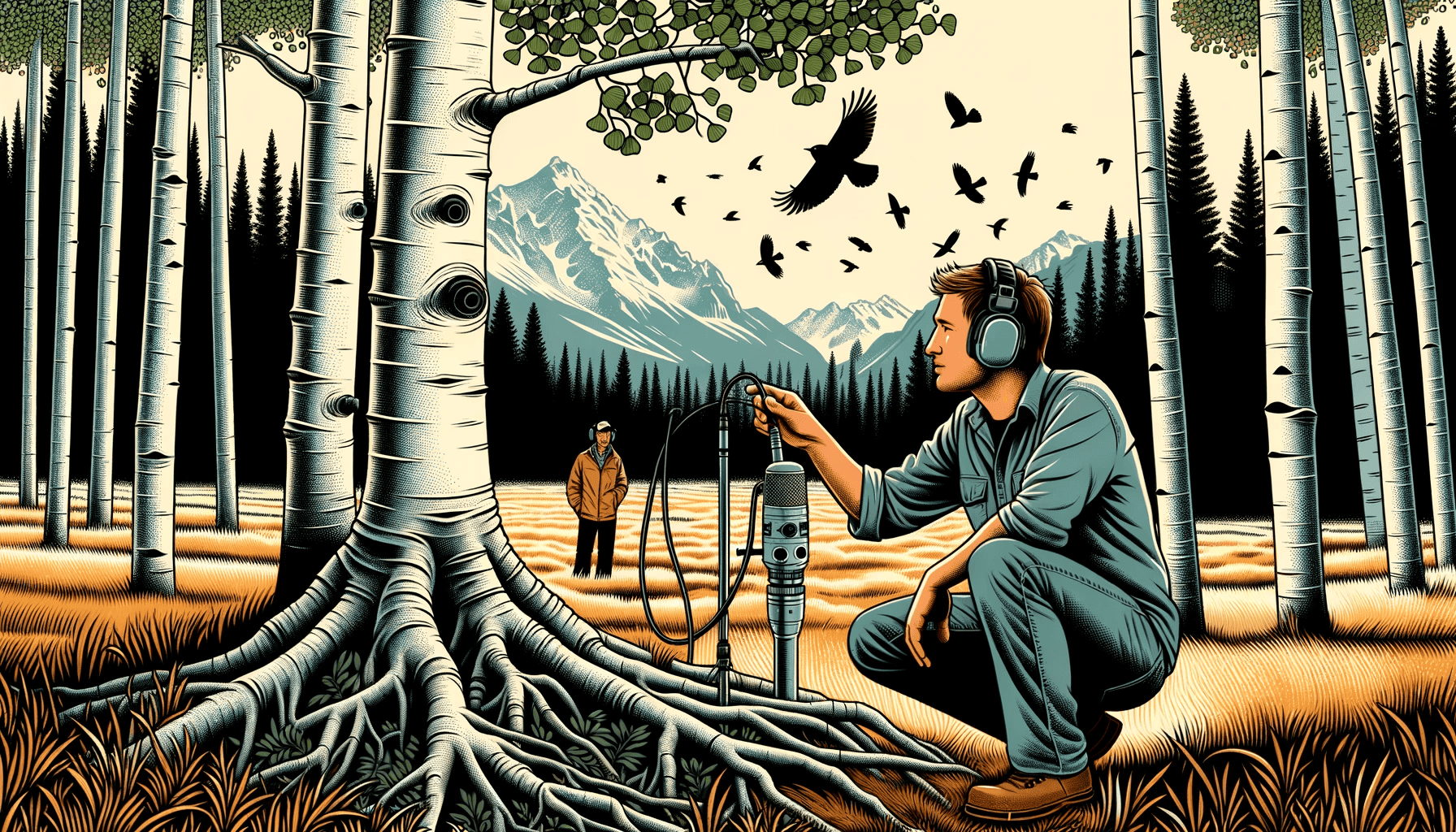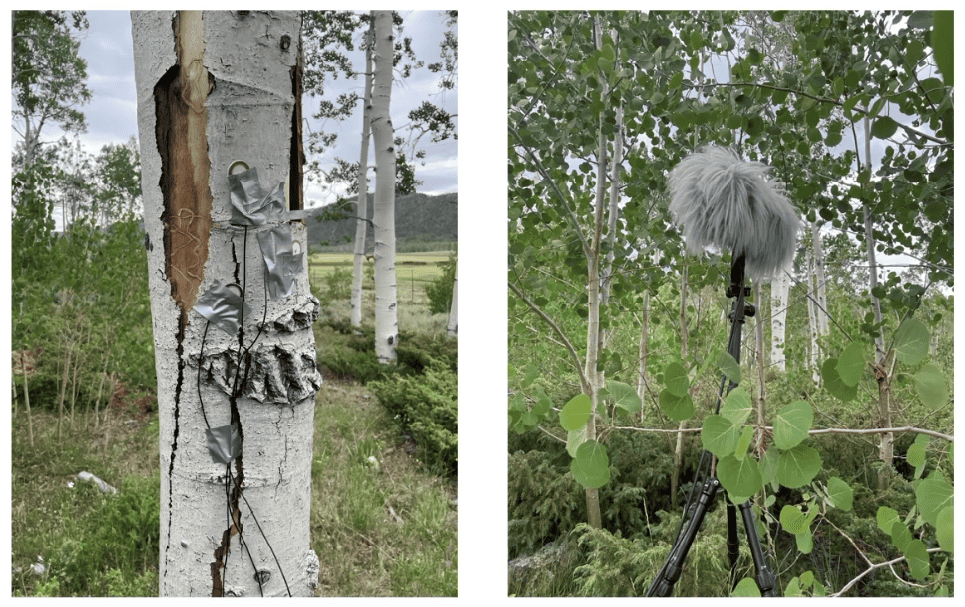
When it comes to superlative organisms, few can match the awe-inspiring Pando aspen grove in Utah. Spanning over 106 acres, this single massive root system consists of around 47,000 genetically identical stems. If you consider such a clonal colony as a single entity, the Pando is clearly the largest tree by weight, species, and land mass.
As if Pando wasn’t awesome enough as it is, the aspen grove is also believed to be at least 9,000 years old, with some claiming the Pando has been cloning itself for as long as 14,000 years. It’s clearly one of the oldest living organisms on Earth.
Surely, the Pando has seen many things across its long history. If only it could speak, its many secrets would be laid before us.
Plants, of course, can’t speak. But that doesn’t mean you can’t listen to them.
Thanks to the efforts of audio engineer and journalist Jeff Rice and the executive director of Friends of Pando, Lance Oditt, we can experience the sounds of Pando in a whole new way.
Using a variety of special microphones, Rice recorded the leaves, birds, and weather of the grove, creating what he calls an “acoustic portrait” of the trembling giant.
The sound of Pando

For Rice, the sounds of nature aren’t just beautiful and interesting; they also offer practical insights into the health of an environment. Natural sounds can provide a record of the local biodiversity and act as a baseline for measuring environmental change.
“Pando challenges our basic understanding of the world,” says Rice, a sound artist from Seattle. “The idea that this giant forest could be a single organism defies our concept of the individual. Its vastness humbles our sense of space.”
During a windstorm, Rice was particularly interested in the sound of vibrations passing through the tree. He saw this as an opportunity to record the vibrations of the giant’s root system, which extends over 27 meters (90 feet) into the soil.
To record the sound of Pando’s root system, he and Oditt used hydrophones. These are special microphones that can detect and record soundwaves under the water, but they can also pick up vibrations from surfaces like roots.
While the sounds are not conclusively from Pando’s root system, the team’s experiments suggest that vibrations can pass from tree to tree through the ground. For instance, when they gently knocked on a Pando branch, the hydrophone registered the low thump from dozens of feet away.
“It’s similar to two cans connected by a string,” Rice said. “Except there are 47,000 cans connected by a huge root system.”
More than just a fun experiment

While their work started as art, Rice and Oditt believe that the data they’ve gathered could have enormous potential for use in science.
By converting wind into vibration (sound) and traveling the root system, they could reveal the inner workings of Pando’s vast hidden hydraulic system in a non-destructive manner. On a much grander, planetary scale, this is how scientists have learned about the various layers of the Earth all the way down to the very core of the planet — because vibrations travel differently through different materials, it is possible to X-ray the subsurface, so to speak.
“Friends of Pando plans to use the data gathered as the basis for additional studies on water movement, how branch arrays are related to one another, insect colonies, and root depth, all of which we know little about today,” said Oditt in a press release.
Listen to Pando’s soundscape and the sounds beneath the tree to experience the beauty of Pando’s acoustic portrait.
- Light thunder and rain in the Pando aspen clone
- Vibrations of a tree in the Pando aspen clone
- The sound of a cup of water poured over roots in the Pando aspen clone
- The sounds of fluttering aspen leaves as heard through a piezo contact microphone
Pando’s uncertain future
The future of Pando is uncertain, as it faces several threats such as human activities, climate change, animals, and wildfires. According to the Friends of Pando, the aspen grove’s health has declined in recent years, with fewer new stems sprouting from the root system. The organization is working to protect the grove by removing dead trees and controlling the spread of invasive species, but much more needs to be done.
As climate change continues to affect the planet, scientists are studying the impacts on forests and other ecosystems. Pando’s unique properties make it an excellent case study for understanding how ecosystems can adapt to changing conditions. By studying the sounds of Pando, scientists can gain insight into how the root system and the trees have responded to environmental stressors over thousands of years of climate change.
The trembling giant’s vastness humbles our sense of space, but it also challenges our basic understanding of the world. Through their acoustic portrait, Rice and Oditt have given us a glimpse into the hidden world of Pando, one of the most fascinating and mysterious organisms on Earth.
The Pando recordings were unveiled in May 2023 at the 184th Meeting of the Acoustical Society of America.









